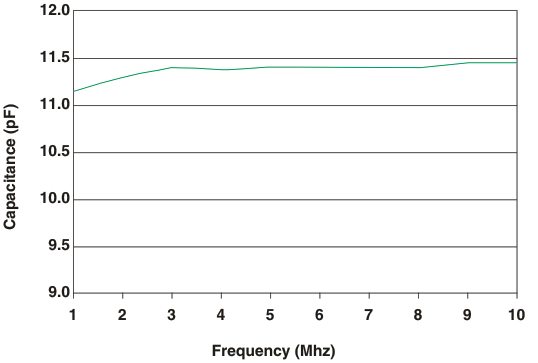SLVS615F July 2006 – December 2016 TPD4E002
PRODUCTION DATA.
- 1 Features
- 2 Applications
- 3 Description
- 4 Revision History
- 5 Pin Configuration and Functions
- 6 Specifications
- 7 Detailed Description
- 8 Application and Implementation
- 9 Power Supply Recommendations
- 10Layout
- 11Device and Documentation Support
- 12Mechanical, Packaging, and Orderable Information
Package Options
Mechanical Data (Package|Pins)
- DRL|5
Thermal pad, mechanical data (Package|Pins)
Orderable Information
6 Specifications
6.1 Absolute Maximum Ratings
over operating free-air temperature range (unless otherwise noted)(1)| MIN | MAX | UNIT | ||
|---|---|---|---|---|
| TJ | Junction temperature | 125 | °C | |
| Top | Operating temperature | –40 | 125 | °C |
| Tstg | Storage temperature | –55 | 150 | °C |
(1) Stresses beyond those listed under Absolute Maximum Ratings may cause permanent damage to the device. These are stress ratings only, which do not imply functional operation of the device at these or any other conditions beyond those indicated under Recommended Operating Conditions. Exposure to absolute-maximum-rated conditions for extended periods may affect device reliability.
6.2 ESD Ratings—JEDEC Specification
| VALUE | UNIT | |||
|---|---|---|---|---|
| V(ESD) | Electrostatic discharge | IEC 61000-4-2 contact discharge | ±15000 | V |
| Human-body model (HBM), per ANSI/ESDA/JEDEC JS-001(1) | ||||
| Charged-device model (CDM), per JEDEC specification JESD22-C101(2) | ||||
(1) JEDEC document JEP155 states that 500-V HBM allows safe manufacturing with a standard ESD control process.
(2) JEDEC document JEP157 states that 250-V CDM allows safe manufacturing with a standard ESD control process.
6.3 ESD Ratings—IEC Specification
| VALUE | UNIT | |||
|---|---|---|---|---|
| Ipp | Peak pulse current | IEC 61000-4-5 (tp = 8/20 μs) | 2.5 | A |
| Ppp | Peak pulse power | IEC 61000-4-5 (tp = 8/20 μs) | 25 | W |
6.4 Recommended Operating Conditions
over operating free-air temperature range (unless otherwise noted)| MIN | MAX | UNIT | ||
|---|---|---|---|---|
| VI/O | Operating voltage | 0 | 5 | V |
| Operating temperature | –40 | 125 | °C | |
6.5 Thermal Information
| THERMAL METRIC(1) | TPD4E002 | UNIT | |
|---|---|---|---|
| DRL (SOT) | |||
| 5 PINS | |||
| RθJA | Junction-to-ambient thermal resistance | 220 | °C/W |
| RθJC(top) | Junction-to-case (top) thermal resistance | 80.3 | °C/W |
| RθJB | Junction-to-board thermal resistance | 42.9 | °C/W |
| ψJT | Junction-to-top characterization parameter | 3.2 | °C/W |
| ψJB | Junction-to-board characterization parameter | 42.5 | °C/W |
| RθJC(bot) | Junction-to-case (bottom) thermal resistance | n/a | °C/W |
(1) For more information about traditional and new thermal metrics, see the Semiconductor and IC Package Thermal Metrics application report.
6.6 Electrical Characteristics
Tamb = 25°C| PARAMETER | TEST CONDITIONS | MIN | TYP | MAX | UNIT | |
|---|---|---|---|---|---|---|
| VBR | I/O breakdown voltage | IR = 1 mA | 6.1 | 7.2 | V | |
| IRM | I/O leakage current | VRM = 3 V | 0.1 | μA | ||
| αT | Voltage temperature coefficient | 4.5 | mV/°C | |||
| C | I/O capacitance per line | 11 | pF | |||
| Rd | Dynamic resistance(1) | 2 | Ω | |||
(1) Rd is measured under reverse breakdown condition with inrush current in the range of 1 A using pulse techniques.
6.7 Typical Characteristics
 Figure 1. I/O Capacitance vs Temperature
Figure 1. I/O Capacitance vs Temperature
 Figure 3. Diode Current Across I/O Voltage (Typical Values)
Figure 3. Diode Current Across I/O Voltage (Typical Values)
 Figure 2. I/O Capacitance vs Frequency (Typical Values)
Figure 2. I/O Capacitance vs Frequency (Typical Values)